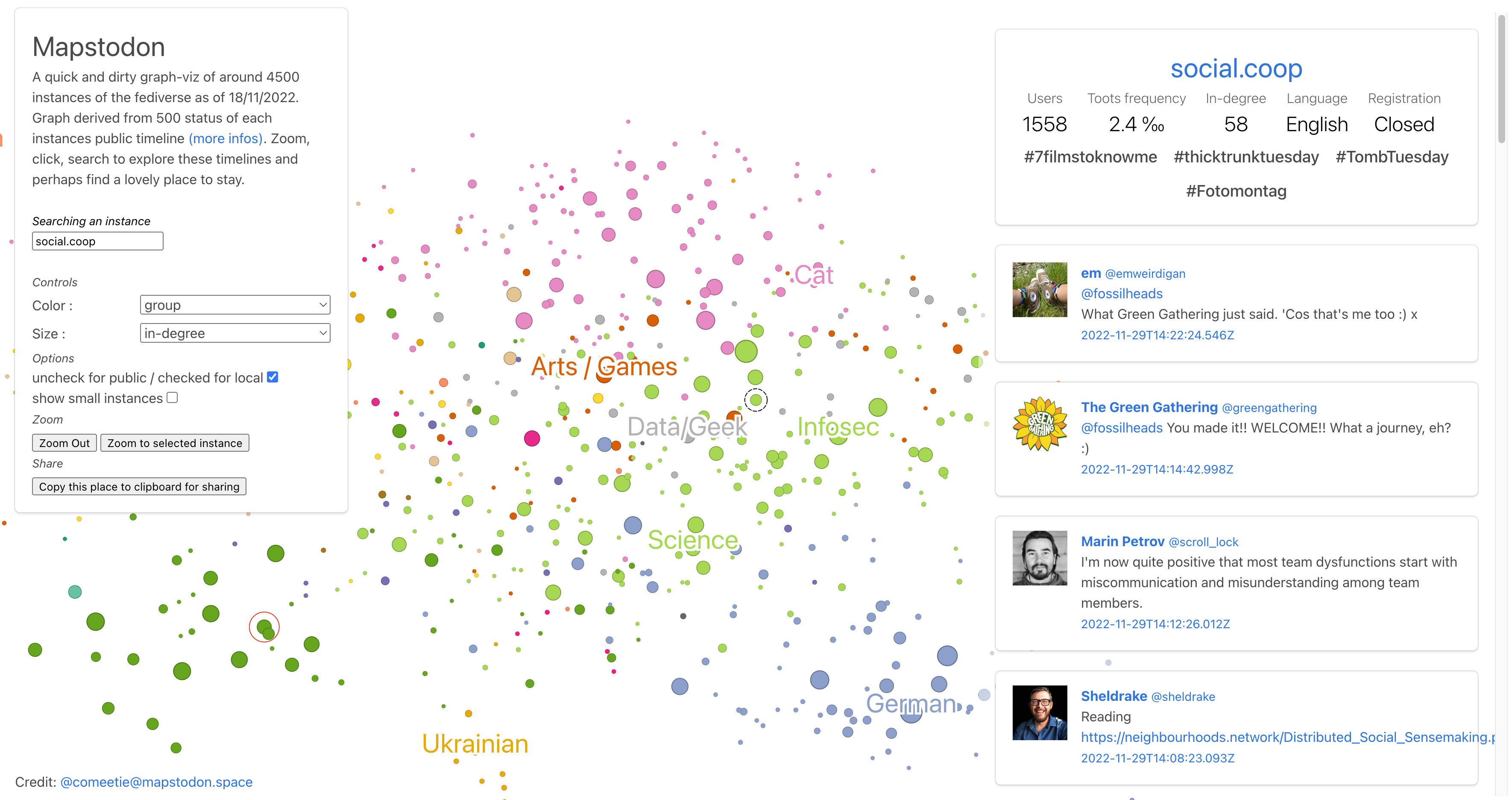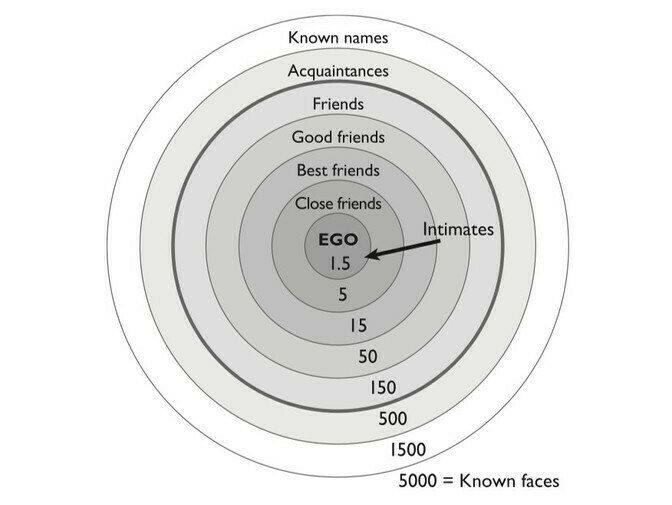(Partially) visualising the Fediverse
About a decade ago, it was possible to visualise your LinkedIn network. I really liked it, especially as I had three distinct groups of connections (EdTech, schools, and Higher Ed).
This website allows you to visualise around 4.5k Fediverse instances, as of last week. You can change the colour and size of the dots depending on number of users, posts, theme, etc.
Exercise.cafe isn’t on there, nor is wao.wtf. But it’s still a useful tool.
Source: Mapstodon
Dunbar's friendship circles
This is interesting: the number of people say they have in different friendship ‘circles’. Extroverts tend to have more than introverts.
Those numbers are aspirational, right? 😅
Dunbar’s number really isn’t a single number. It should be a series of numbers. When collecting data on personal friendships, we asked everybody to list out everybody in their friendship circles, when they last saw them, and how emotionally close they felt to them on a simple numerical scale. Relationships turned out to be highly structured in the sense that people didn’t see or contact everybody in their social network equally. The network was very clumpy.Source: Robin Dunbar Explains Humans' Circles of Friendship | The AtlanticThe distribution of the data formed a series of layers, with each outer layer including everybody in the inner layer. Each layer is three times the size of the layer directly preceding it: 5; 15; 50; 150; 500; 1,500; 5,000.
The innermost layer of 1.5 is [the most intimate]; clearly that has to do with your romantic relationships. The next layer of five is your shoulders-to-cry-on friendships. They are the ones who will drop everything to support us when our world falls apart. The 15 layer includes the previous five, and your core social partners. They are our main social companions, so they provide the context for having fun times. They also provide the main circle for exchange of child care. We trust them enough to leave our children with them. The next layer up, at 50, is your big-weekend-barbecue people. And the 150 layer is your weddings and funerals group who would come to your once-in-a-lifetime event.
The layers come about primarily because the time we have for social interaction is not infinite. You have to decide how to invest that time, bearing in mind that the strength of relationships is directly correlated with how much time and effort we give them.
Would you be nuked?
In the light of the recent false alarm about the nuclear attack on her home of Hawaii, Amy Burvall shared this website in our Slack channel.
You can play about with it to find out what would be the effect of different sized nuclear bombs hitting somewhere near to you. I live in Morpeth, Northumberland, UK so, as you can see from the map below, although we may die from radiation poisoning, an attack on our nearest city of Newcastle-upon-Tyne wouldn’t flatten buildings here.

Makes you think.
Source: NUKEMAP

